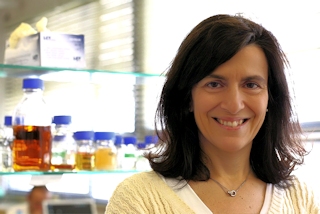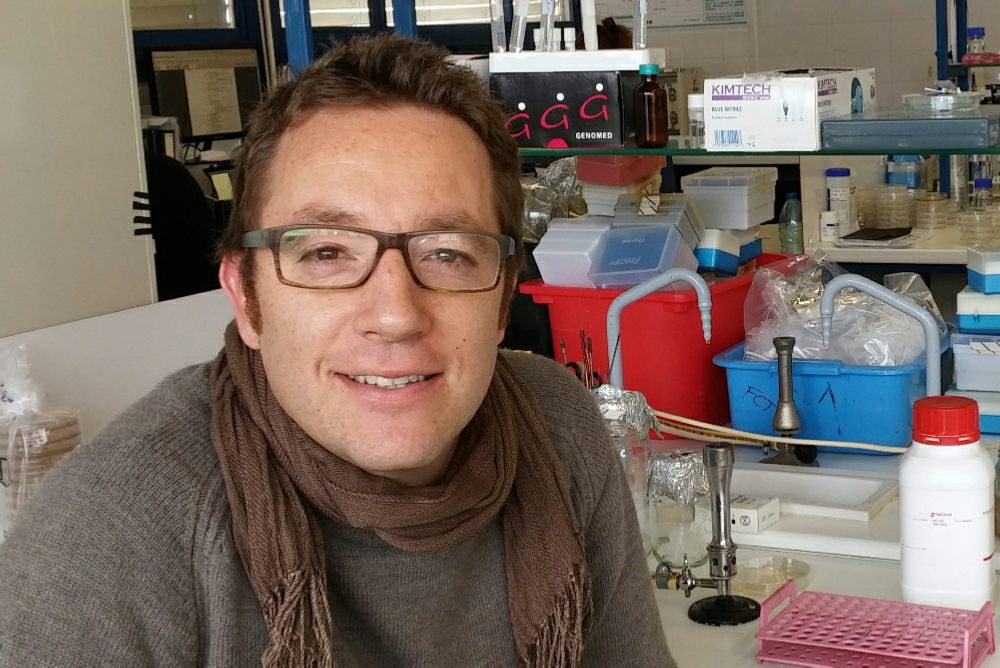The Yeast Genomics* lab @ NOVA
(*evolutionary, functional, comparative and more)



People

Celso Almeida
Postdoctoral Fellow
Lab: (+351) 21 294 85 30 (ext. 11108)
Email: ch.almeida@campus.fct.unl.pt
MSc in Biodiversity of Natural Products, University of Leiden, The Netherlands, 2005
PhD in Pharmaceutical Biology, University of Bonn, Germany, 2011




Publications
Almeida C, El Maddah F, Kehraus S, Schnakenburg G, König GM. 2016. Endolides A and B, Vasopressin and Serotonin-
DOI:10.1021/acs.orglett.5b03553.
Almeida C*, Ortega H, Higginbotham S, Spadafora C, Arnold AE, Coley PD, Kursar TA, Gerwick WH, Cubilla-
Almeida C*, El Aouad N, Martín J, Pérez-
Bouhired SM, Crüsemann M, Almeida C, Weber T, Piel J, Schäberle TF, König GM. 2014. Biosynthesis of phenylnannolone A, a multidrug resistance reversal agent from the halotolerant myxobacterium Nannocystis pusilla B150. Chembiochem 15:757-
Schmitz A, Kehraus S, Schäberle TF, Neu E, Almeida C, Roth M, König GM. 2014. Corallorazines from the myxobacterium Corallococcus coralloides. J Nat Prod. 77:159-
Almeida C, Eguereva E, Kehraus S, König GM. Unprecedented polyketides from a marine sponge-
Almeida C, Hemberger Y, Schmitt SM, Bouhired S, Natesan L, Kehraus S, Dimas K, Gütschow M, Bringmann G, König GM. 2012. Marilines A-
Almeida C, Part N, Bouhired S, Kehraus S, König GM. Stachylines A-
Almeida C, Kehraus S, Prudêncio M, König GM. Marilones A-
Almeida C, Elsaedi S, Kehraus S, König GM. 2010. Novel bisabolane sesquiterpenes from the marine-
Almeida C, Eguereva E, Kehraus S, Siering C, König GM. 2010. Hydroxylated sclerosporin derivatives from the marine-
Bauvois C, Ibuka AS, Almeida C, Alba J, Ishii Y, Frère JM, Galleni M. 2005. Kinetic properties of four plasmid-
DOI: 10.1128/AAC.49.10.4240-
(*co-
Research interests
I am interested in two main topics: discovering new natural products from microorganisms and understanding symbioses between fungi and intracellular bacteria.
In natural products discovery, my focus is to find new bioactive secondary metabolites from microorganisms with pharmaceutical, agrochemical or cosmetic applications. At the moment I have isolated and identified more than 40 new natural products from Fungi and Bacteria, most of them with biological activity, and two groups of chemical families are currently in in vivo assays for potential patent applications.
My current research topic is the study of symbioses of endobacteria living in the intracellular space of fungi, where they are vertically inherited within fungal conidia (spores). My goal is not only to shed light on their biology, but also to detect new secondary metabolites produced by these intracellular bacteria. I am conducting experiments with the fungus Stachylidium bicolor, which seems to be a meta-
